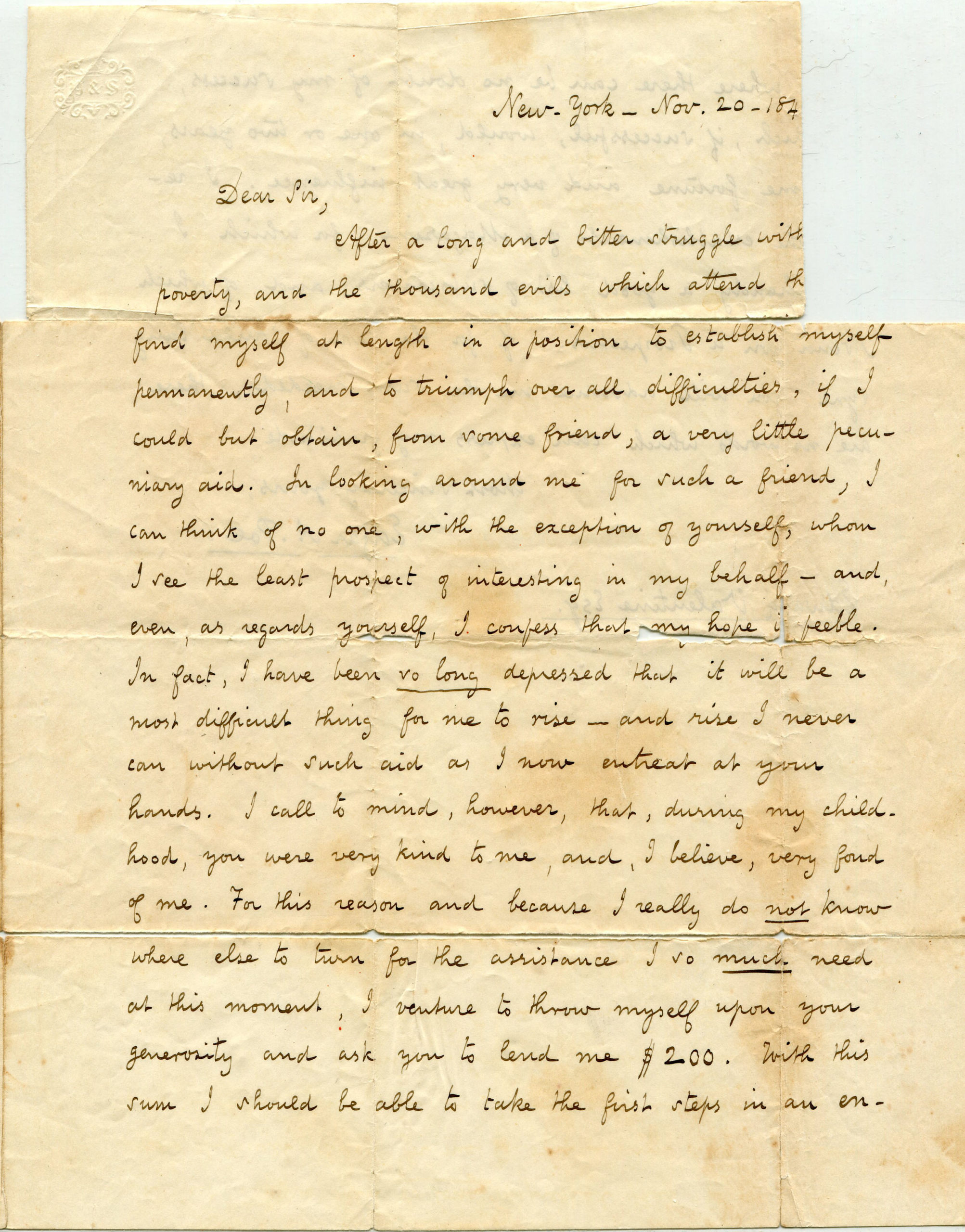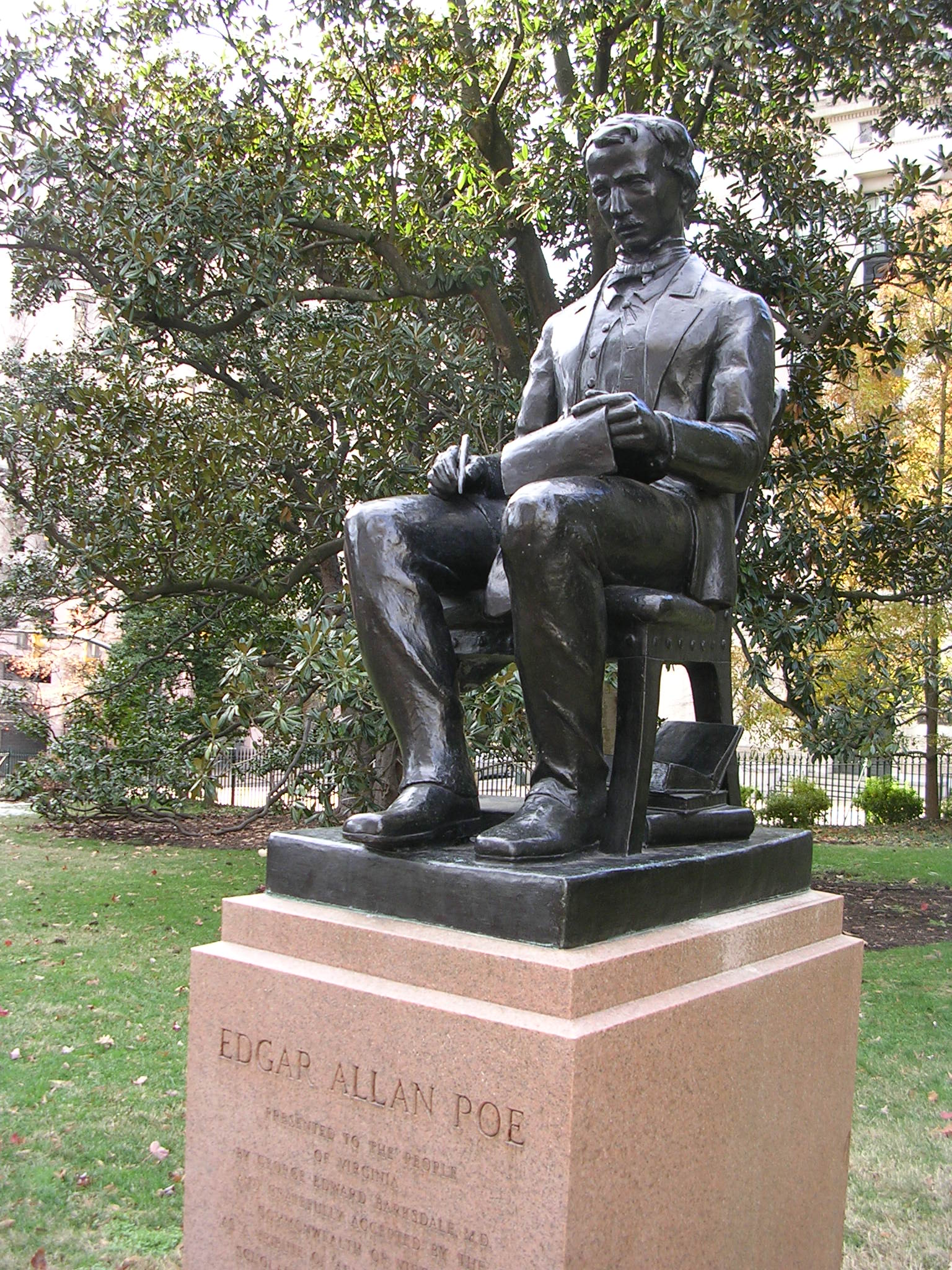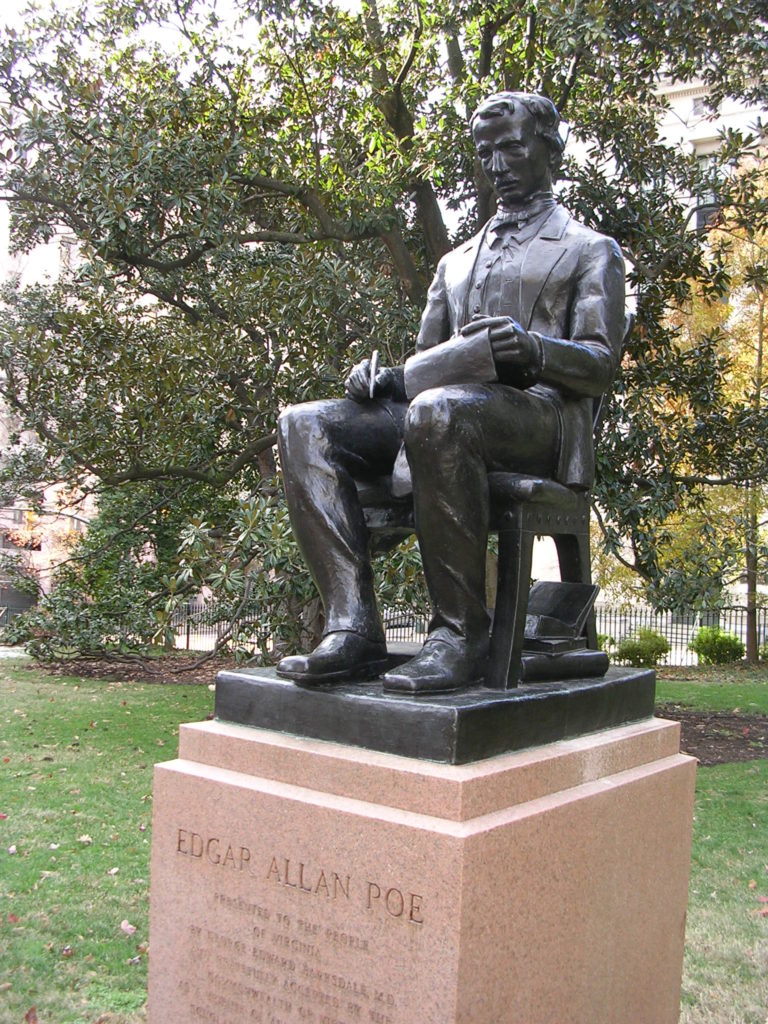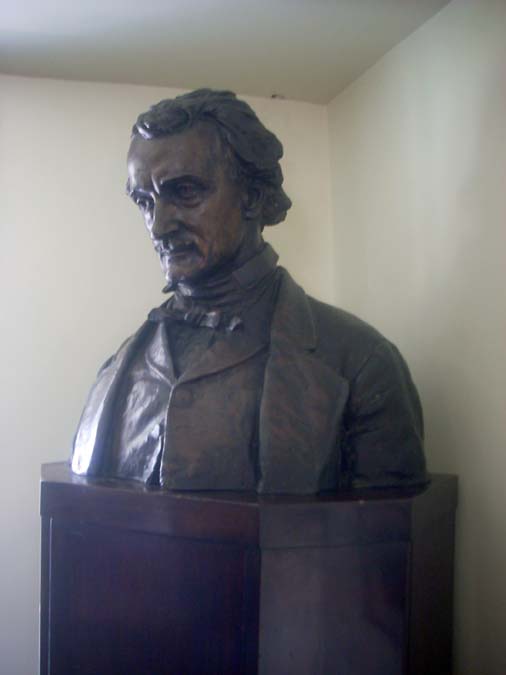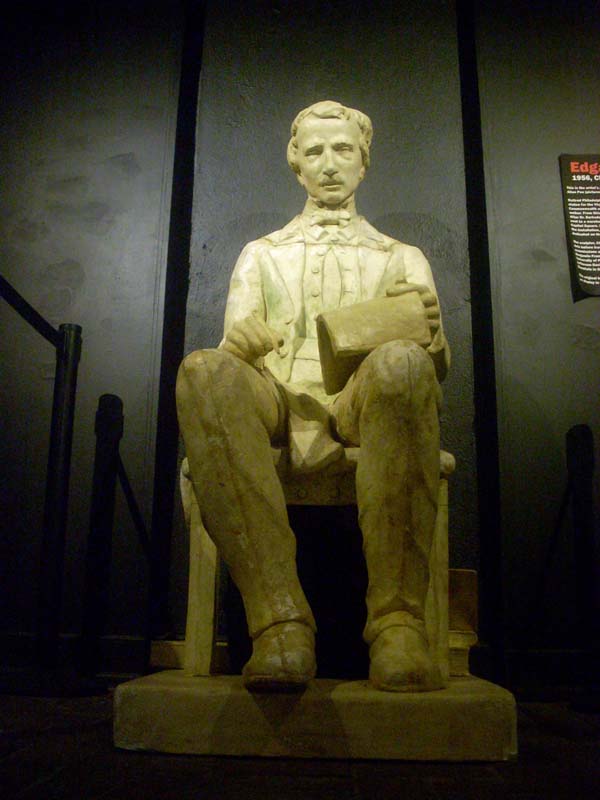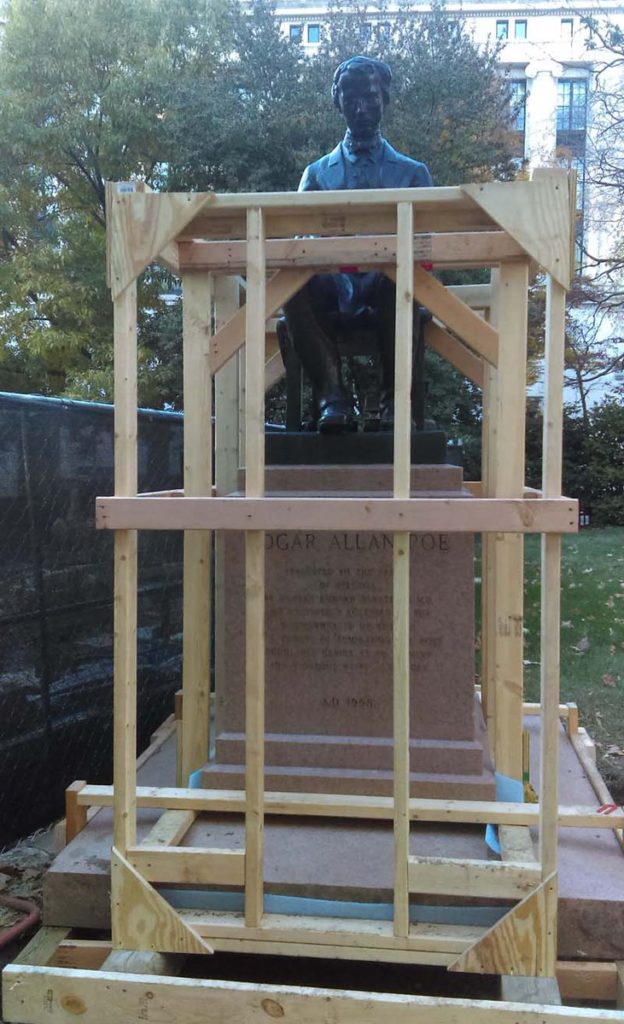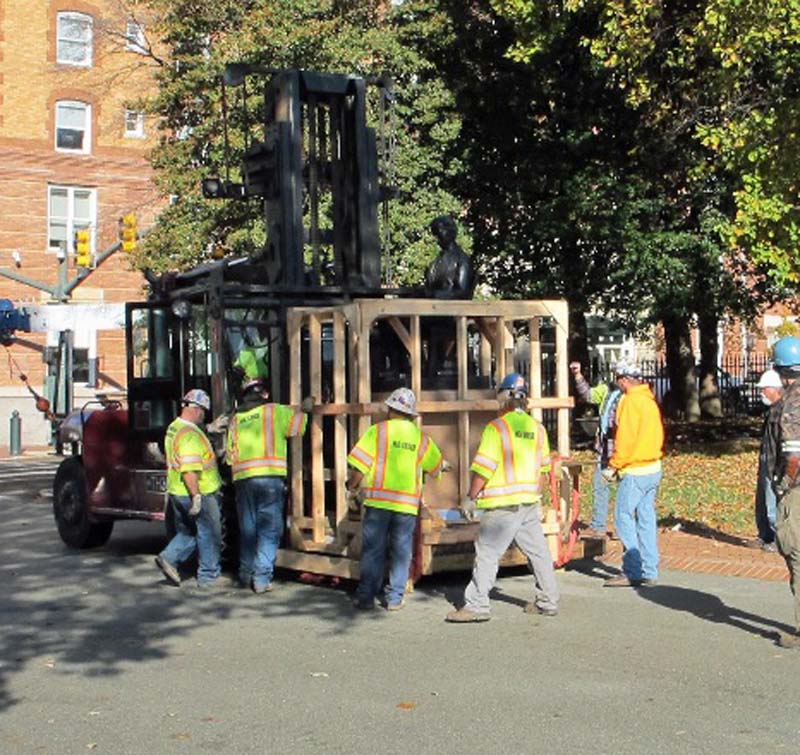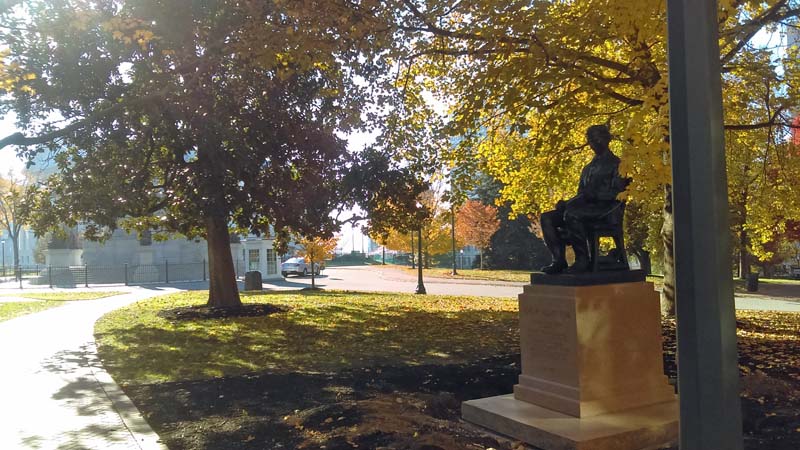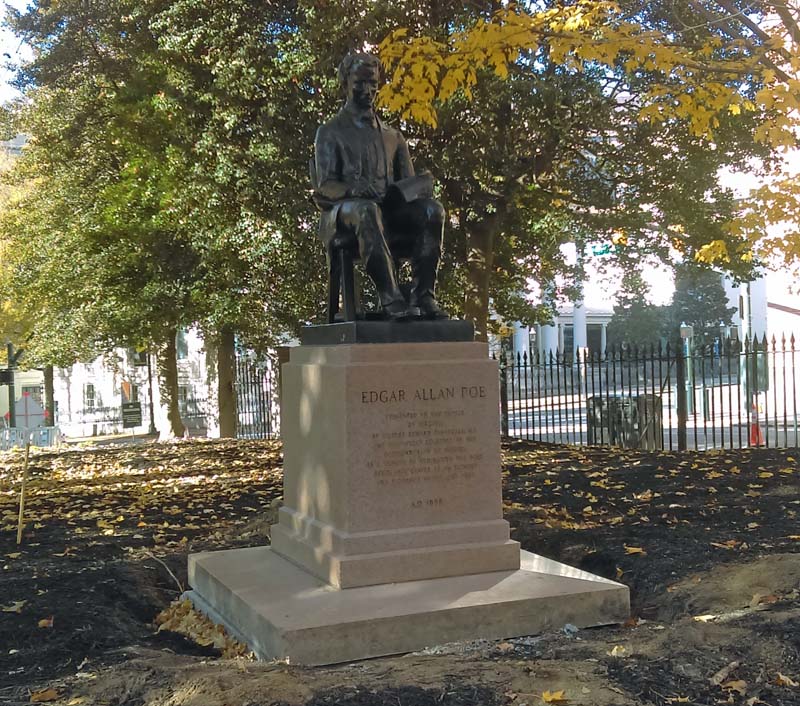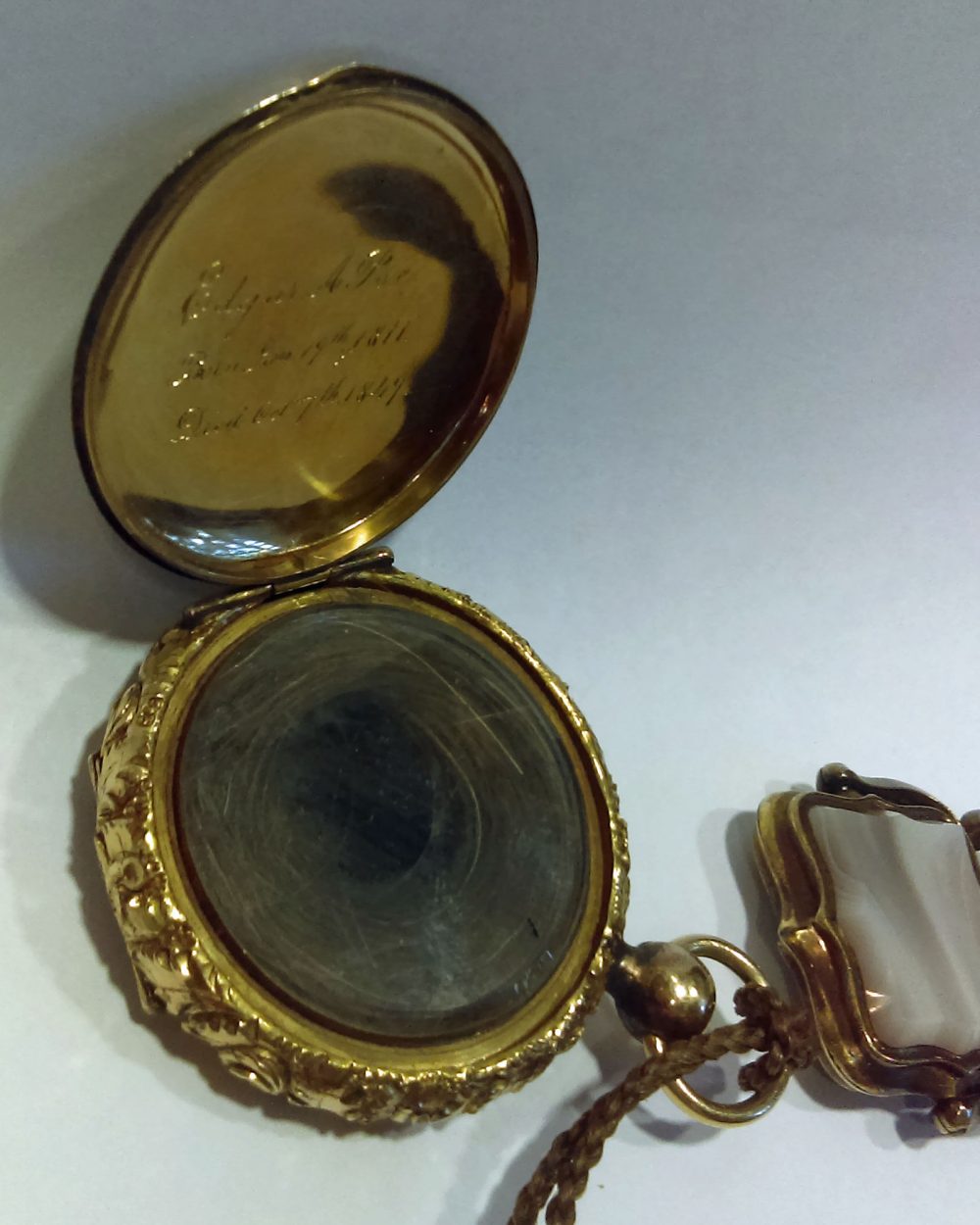Virginia Clemm Poe
One hundred and eighty years ago Edgar Allan Poe married his cousin Virginia Clemm in a small ceremony in Richmond.
For a very awkward moment, try explaining to a group of thirteen-year-old middle school students that they are the same age Edgar Allan Poe’s wife was when he married her—and that her husband was twenty-seven at the time. (To learn more about the wedding ceremony, click here.) Even though Virginia Clemm Poe lived until the age of twenty-four, she is still frequently referred to as Poe’s “child-wife,” as if she were forever thirteen.
The nature of the relationship between Poe and his bride has long been a matter of speculation. To make matters more confusing, in the same August 1835 letter, he called her a sister, a cousin, and a “darling little wifey.” His nickname for her was Sissy (sister), and he called her mother, Maria Poe Clemm, Muddy (mother). Virginia sometimes referred to Edgar as Buddy (brother).
In letters to his mother-in-law, Poe speaks of Virginia in affectionate terms. During an 1844 trip to New York with Virginia, Edgar wrote Maria, “Sis is delighted, and we are both in excellent spirits. She has coughed hardly any and had no night sweat. She is now busy mending my pants which I tore against a nail…You can’t imagine how much we both to miss you. Sissy had a hearty cry last night, because you and Catterina [their cat] weren‘t here.”
Unfortunately, when she was nineteen, Virginia displayed symptoms of tuberculosis, a wasting disease that robbed her of her strength, her energy, and eventually her life. In a January 4, 1848 letter to G. W. Eveleth, Poe describes the agony of seeing her suffer and die from the disease.
Six years ago, a wife, whom I loved as no man ever laved before, ruptured a blood-vessel in singing. Her life was despaired of. I took leave of her forever, and underwent all the agonies of her death. She recovered partially, and I again hoped. At the end of a year, the vessel broke again. I went through precisely the same scene. . . . Then again — again — and even once again, at varying intervals. Each time I felt all the agonies of her death — and at each accession of the disorder I loved her more dearly and clung to her life with more desperate pertinacity. But I am constitutionally sensitive — nervous in a very unusual degree. I became insane, with long intervals of horrible sanity. During these fits of absolute unconsciousness, I drank — God only knows how often or how much. As a matter of course, my enemies referred the insanity to the drink, rather than the drink to the insanity. I had, indeed, nearly abandoned all hope of a permanent cure, when I found one in the death of my wife. This I can and do endure as becomes a man. It was the horrible never-ending oscillation between hope and despair which I could not longer have endured, without total loss of reason. In the death of what was my life, then, I receive a new, but — Oh God! — how melancholy an existence.
Aside from his mentions of her in letters like these, scholars have also tried to find traces of Virginia in Poe’s literary productions. While it is tempting to learn about Poe’s feeling for Virginia in his poems like “Eulalie” and “Annabel Lee,” the poem in which he mentions her by name is “To My Mother,” which is addressed not to his mother but to his mother-in-law, Virginia’s mother. Written after Virginia’s death, the poem describes how much she meant to him in the lines,
You who are more than mother unto me,
Filling my heart of hearts, where God installed you,
In setting my Virginia’s spirit free.
My mother — my own mother, who died early,
Was but the mother of myself; but you
Are mother to the dead I loved so dearly,
Are thus more precious than the one I knew,
By that infinity with which my wife
Was dearer to my soul than its soul-life.
Of the relationship between Edgar and Virginia, one of their mutual acquaintances Frances Osgood wrote, “Of the charming love and confidence that existed between his wife and himself, always delightfully apparent to me, in spite of the many little poetical episodes, in which the impassioned romance of his temperament impelled him to indulge; of this I cannot speak too earnestly — too warmly. I believe she was the only woman whom he ever truly loved.”
Another of their friends, Lambert A. Wilmer, recalled,
I could mention several striking examples of Poe’s sensibility if my limits would permit. He was unquestionably of an affectionate disposition; of which he gave the best kind of proof when he labored cheerfully for the maintenance of his aunt and cousin, before his marriage with the latter. While he was editor of the Southern Literary Messenger he devoted a large part of his salary to Virginia’s education, and she was instructed in every elegant accomplishment at his expense. He himself became her tutor at another time, when his income was not sufficient to provide for a more regular course of instruction. I remember once finding him engaged, on a certain Sunday, in giving Virginia lessons in Algebra.
One of his severe chroniclers says: “It is believed by some that he really loved his wife; if he did, he had a strange way of showing his affection.” Now it appears to me that he showed his affection in the right way, by endeavoring to make his companion happy. According to the opportunities he possessed, he supplied her with the comforts and luxuries of life. He kept a piano to gratify her taste for music, at a time when his income could scarcely afford such an indulgence. I never knew him to give her an unkind word, and doubt if they ever had any disagreement. That Virginia loved him, I am quite certain, for she was by far too artless to assume the appearance of an affection which she did not feel.
Casting aside nineteenth century propriety, Virginia is said to have run to the sidewalk to embrace her husband when she saw him returning home from work. Other accounts tell of them playing music together or playing games in their yard. Witnesses describe their marriage as a cheerful one. Describing her love for her husband, the twenty-three year old Virginia wrote in 1846,
Ever with thee I wish to roam —
Dearest my life is thine.
Give me a cottage for my home
And a rich old cypress vine,
Removed from the world with its sin and care
And the tattling of many tongues.
Love alone shall guide us when we are there —
Love shall heal my weakened lungs;
And Oh, the tranquil hours we’ll spend,
Never wishing that others may see!
Perfect ease we’ll enjoy, without thinking to lend
Ourselves to the world and its glee —
Ever peaceful and blissful we’ll be.
In her short life, Virginia grew into a lovely young woman described by one of her houseguests Mary Gove Nichols as looking “very young” with “large black eyes, and a pearly whiteness of complexion, which was a perfect pallor. Her pale face, her brilliant eyes, and her raven hair gave her an unearthly look.” Nichols believed she looked “almost [like] a disrobed spirit, and when she coughed it was made certain that she was rapidly passing away.” By this time, Virginia had been suffering for the past few years from tuberculosis, which would have caused her to be very thin and pale—a look considered very attractive at the time. In the words of Poe’s friend Mayne Reid, “I well knew the rose tint upon her cheek was too bright, too pure to be of the earth. It was consumption’s color—that sadly beautiful light which beckons to an earth tomb.”
While most who knew her described Virginia, as Reid did, as “angelically beautiful in person and not less in spirit,” Susan Archer Talley Weiss, a Poe groupie who never actually met Virginia, thought she was “small for her age, but very plump; pretty, but not especially so…[with a] round, ever smiling face.”
There are no known photographs of Virginia to help us determine whether Reid or Weiss was closer to the truth, and the popular post mortem portrait of Virginia hardly gives us a sense of how this cheerful, loving woman must have looked in life.
Post Mortem Portrait of Virginia Poe
After Virginia succumbed to tuberculosis at the age of twenty-four, her mother saved some of her cherished possessions. Among those items she felt worthy of saving, for their sentimental value or for some other reason, was a simple red trinket box covered in red leatherette with little brass flowers on top. Two years later, Edgar Poe also died, and Maria Clemm became dependent on the support of friends and relatives in New York, Alexandria, and Baltimore. In Baltimore, she found Poe relatives who offered some assistance before she ended up in one of the city’s charity homes.
Virginia Poe’s Trinket Box
One of the friendly relatives was Virginia’s half-sister, Josephine Clemm Poe. To her, Maria Clemm bequeathed some of Virginia’s possessions, including her little red trinket box. Josephine, in turn, left the items to her daughter, who gave some of them to her niece Josephine Poe January.
Virginia’s Half-Sister Josephine Clemm Poe
Josephine Poe January had grown up revering the memory of her great aunt Virginia Poe and, in 1909, wrote the article “Edgar Allan Poe’s ‘Child Wife’” about her for the October 1909 issue of The Century. In the account, January describes Virginia’s “unchanging love” for Edgar. The article concludes with the lines, “One sees it now, and thinks of the poverty, the sorrow, the renunciation, of those two, and at first it seems so pitifully little that life gave to them. But is it little? To him the gift of song, to her the gift of love.”
Bottom of Virginia Poe’s Trinket Box
At some point, January met the Richmond-born diplomat Alexander W. Weddell whose wife was from Saint Louis, where January was living. Mr. Weddell had been born in St. John’s Church, a short distance from Poe’s mother’s grave in the adjoining cemetery. After passing his Foreign Service exam in 1909, he traveled on diplomatic assignments to Zanzibar, Catania, Sicily, Athens, Beirut, Cairo, Calcutta, Mexico City, and Montreal before returning to Richmond, where he used materials salvaged from an eleventh century English priory to build a grand mansion called Virginia House.
During a meeting with the Weddells, January must have told them about her relation to Edgar Allan Poe, and the Weddells informed her that they were supporters of the newly formed Edgar Allan Poe Shrine (now the Poe Museum) in Richmond. As a result of the conversation, January wrote Pultizer Prize-winning editor, historian, and Poe Shrine president Douglas Southall Freeman on September 5, 1927,
My Dear Dr. Freeman,
My friend and yours Alexander W. Weddell told me he thought you would be interested to have for the Poe Shrine in Richmond a little possession that was once Virginia Clemm Poe’s. My grandmother Josephine Clemm Poe was her sister and this little red box came with the other little relics of Virginia’s bitter-sweet life.
It is in the form of a little chest of red wood or hard card board perhaps with a brass ring on the lid and may well have held some of her own little trinkets in the Fordham days. At least it is completely authentic and has never been in any other than her family’s hands. We were brought up as children to share my grandmother’s sense of loyalty and to know the inside truth of their wishing to have Virginia go to school and live with them a little longer before marrying Edgar. So we loved everything about her and my aunt who became custodian after her parents’ death loved everything about E.A.P.
I hope very much to come to Richmond when the dear Weddells are in “Virginia House” and to see the Shrine. Meanwhile I feel that it is the place Virginia’s little box should go to as nobody after me would value it as much as I have. If you care to have it and will let me know here where I shall be until October I will post it to you when I return to St. Louis.
Very Sincerely,
Josephine Poe January
Josephine Poe January’s Letter to the Poe Museum
The Poe Shrine jumped at the chance to accept the donation of this priceless relic of Poe’s wife. The chairman of the executive committee, museum co-founder Annie Boyd Jones wrote her, “As the children say, we just can’t wait to see the little red box.”
Decoration on Top of Trinket Box
Since 1927, Virginia Poe’s trinket box, one of her very few surviving possessions, has been on display at the museum for the public to study and appreciate, imagining how Virginia must have kept her few, modest trinkets in it and how she, Edgar, and Maria survived in genteel poverty while Edgar wrote for a succession of magazines in Richmond, Philadelphia, and New York. One wonders what miniature treasures Virginia kept in the box and what became of them. Maybe the box held the portrait of her husband she supposedly kissed and gave to her nurse Marie Louise Shew shortly before dying. Maybe it held a ring or a letter from Edgar. We may never know. Another question we may never answer is precisely why, out of all Virginia’s possessions, Maria Clemm chose to save this box. Maybe it had been a favorite of Virginia’s, a gift from a good friend, or just a reminder of happier times. Like most great artifacts, it makes us ask far more questions than it answers.
The Trinket Box Getting Scanned
Earlier this year, Virginia Commonwealth University’s Virtual Curation Laboratory visited the Poe Museum to make a 3D scan of the trinket box so that a three dimensional replica could be printed. Such a replica would allow museum visitors to see the actual trinket box locked safely in its case while handling the nearly identical replica. This new printing technology will offer new ways for the public to experience the museum’s collection, bringing us just a little closer to understanding what this box meant to the most important woman in Poe’s life.
Digital Image of the Trinket Box During Scanning
Now displayed alongside Virginia’s mirror in the Poe Museum’s Model Building, the box is a favorite among the museum’s many guests. Museum visitors this summer also have the rare opportunity to see two fragments of Virginia Poe’s trousseau (on loan from Dr. Richard Kopley) in the same exhibit case.
In honor of Poe’s 180th wedding anniversary, Virginia Poe’s trinket box is the Poe Museum Object of the Month. Click here to find out more about some of the other Objects of the Month.

